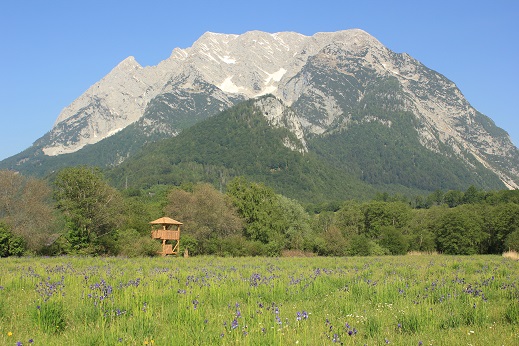In order to illustrate the diversity of the grassland, different origins or varieties of a species or family are planted on the plots.

1 - cocksfoot
2 - Timothe (Timothygrass)
3 - red clover
4 - horn trefoil
5 - catchfly
6 - Yarrow
7 - cloves
8 - Sage
9 - scabioses
Plot 1 + 2
Cocksfoot and timothy are important, yield-generating grass species in grassland farming. On plots 1 and 2 in the show garden, the two grasses can be seen next to each other; a clear distinguishing feature is the youngest leaf. In cocksfoot it is folded flat, in timothy it appears clearly rolled up. The two grasses can be distinguished just as well by their inflorescences; cocksfoot has thick tangles of inflorescences, while timothy grass has a false spike as thick as a pen.
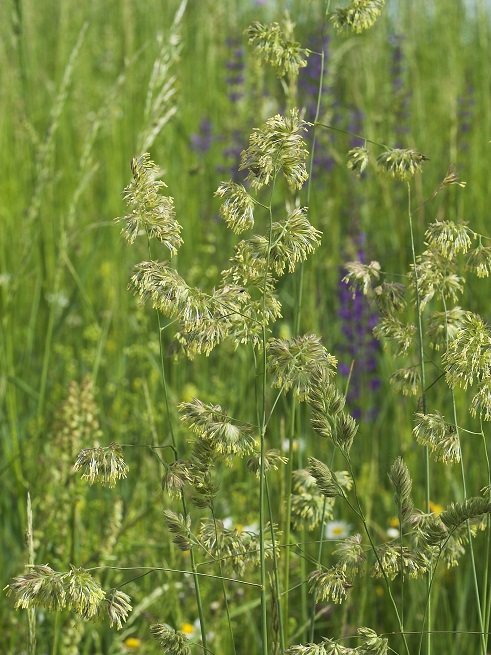 |
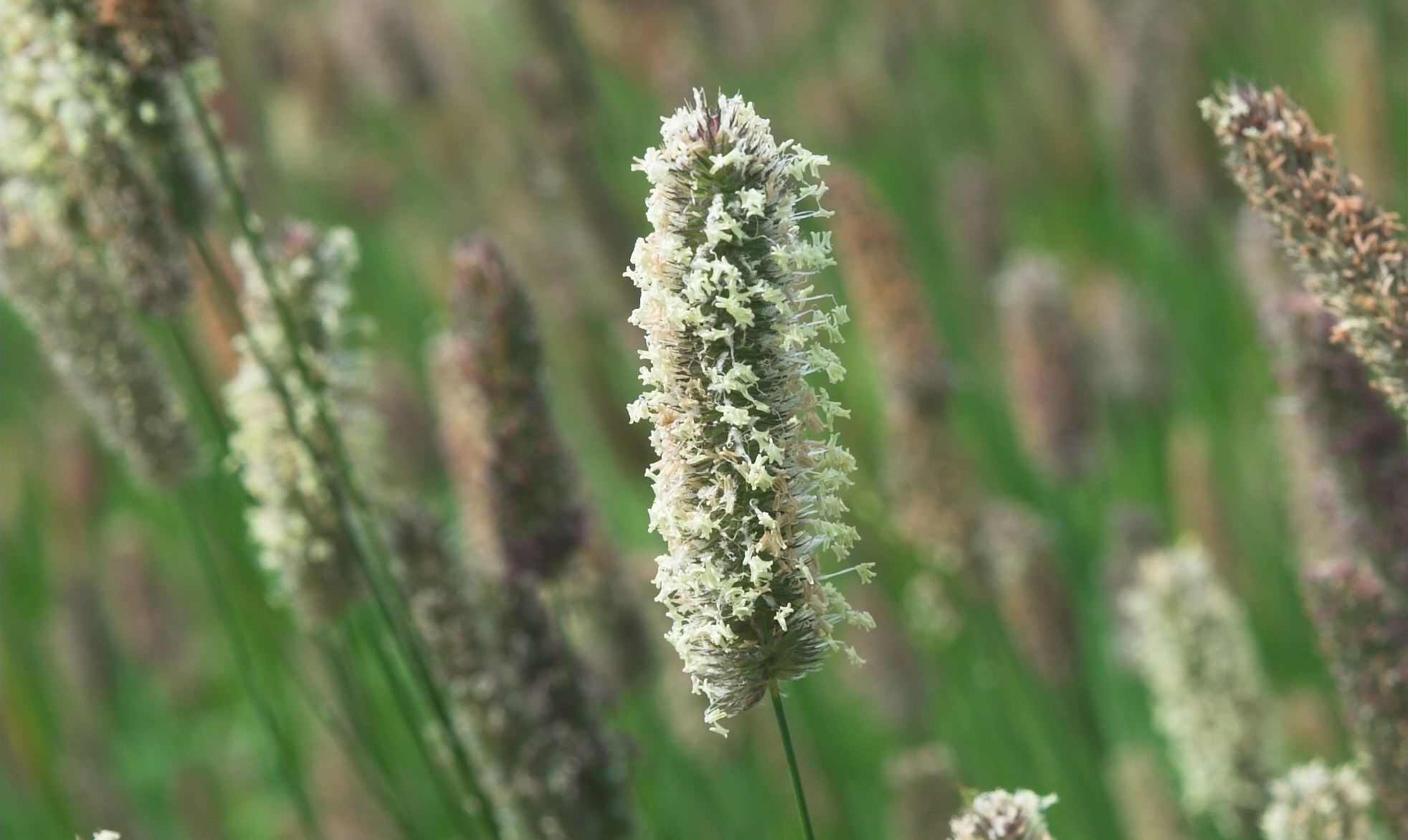 |
| Cocksfoot flower | Timothy grass blossom |
Fig : The two grasses can be distinguished just as well by their inflorescences; cocksfoot has thick tangles of inflorescences, while timothy grass has a false spike.
Plot 3
Plot 3 contains the red clover varieties Semperina, Gumpensteiner Rotklee and Tedi. They need a certain amount of time to form a dense stand, but then they are productive and sufficiently resistant to cutting. Red clover serves as an important source of protein for cattle, which can efficiently utilize grassland.
Plot 4
With its rich flowering cushions, horn trefoil is of great importance for bees and other beneficial insects. It can be found in meadows, along roadsides and up to higher altitudes. The three varieties Marianne, Rocco and Odenwälder as well as a test collection from Carinthia grow in test plot 4.
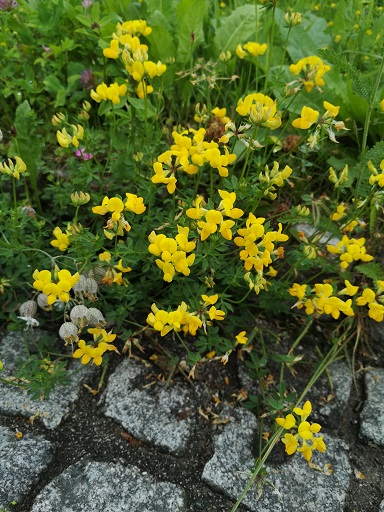 Horn trefoil
Horn trefoil
Plot 5
Catchfly species such as blown catchfly, ruby catchfly, red campion and nodding catchfly are an enrichment for the environment and can be found in different habitats and altitudes. Butterflies and their caterpillars like to use the plants as a source of food.
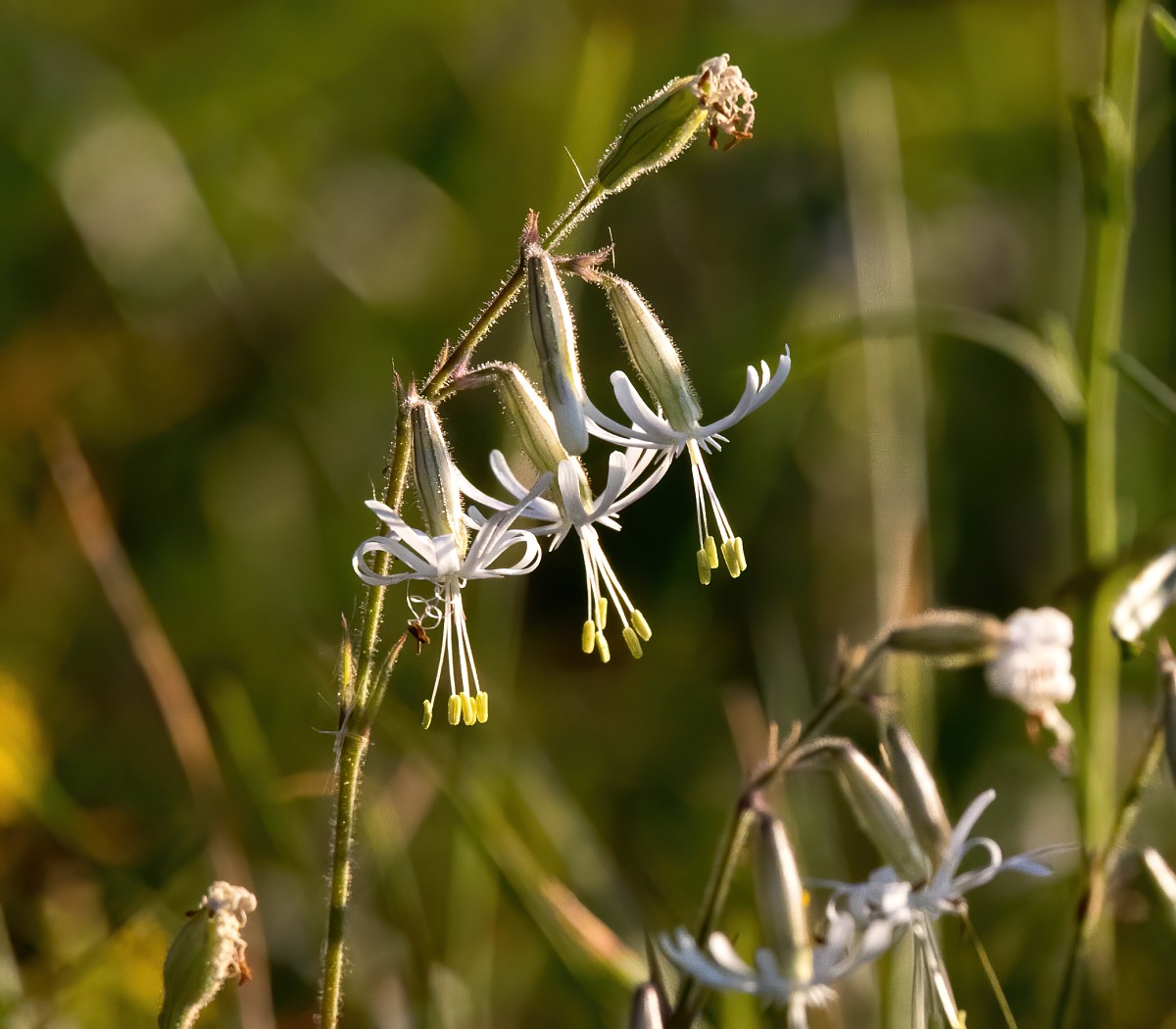 Silene nutans (catfly)
Silene nutans (catfly)
plot 6
Yarrow contributes to the herbal aroma of the meadow fodder and hay, and it is also used as a medicinal plant. Its basket flowers are very attractive to insects and it blooms from bright white to slightly pink. The species in plot 6 are perennial and also spread via their branched root system.
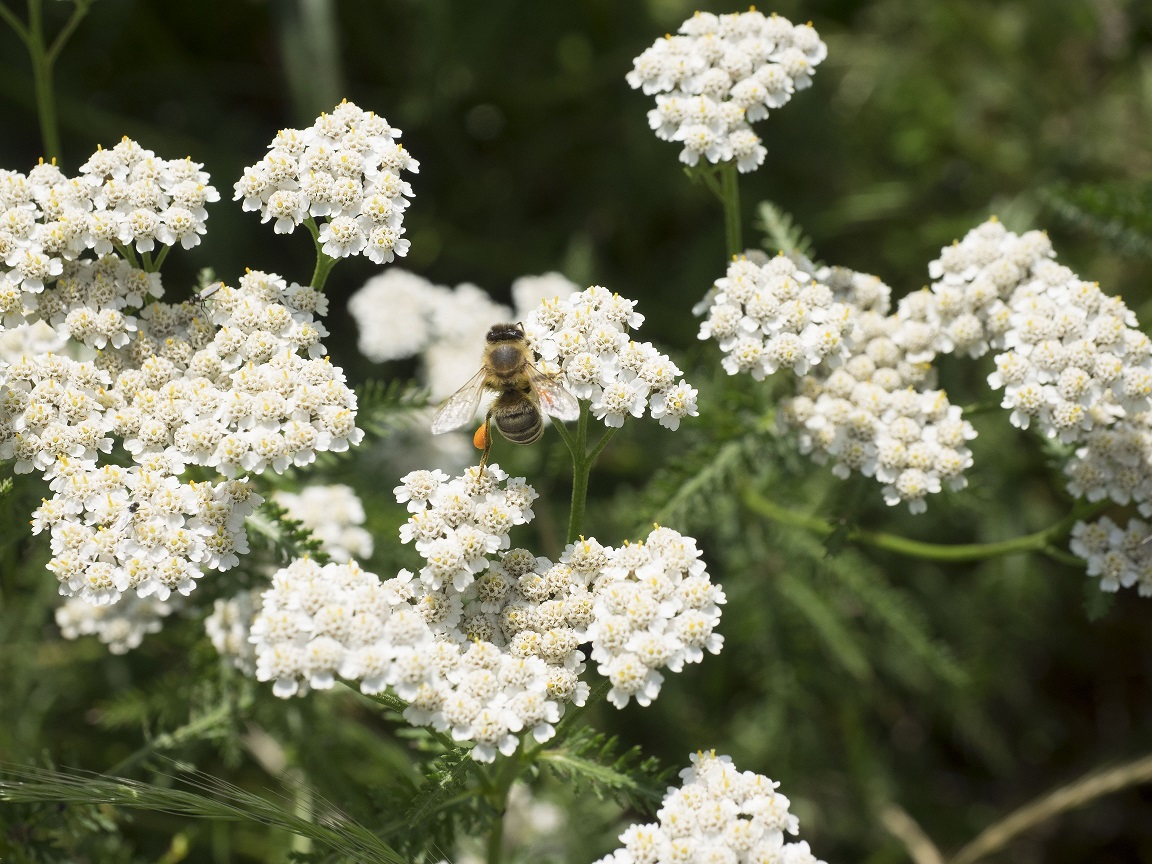 yarrow
yarrow
plot 7
Carnations impress with their diverse flower shapes and usually with strong, pink colors or fringed petals. The feather carnation, the Carthusian carnation and the tufted carnation also grow on sandy, nutrient-poor soils. Their nectar is only accessible to long-pronged insects. The wet meadow carnation is one of the most endangered species in Austria and has striking flowers.
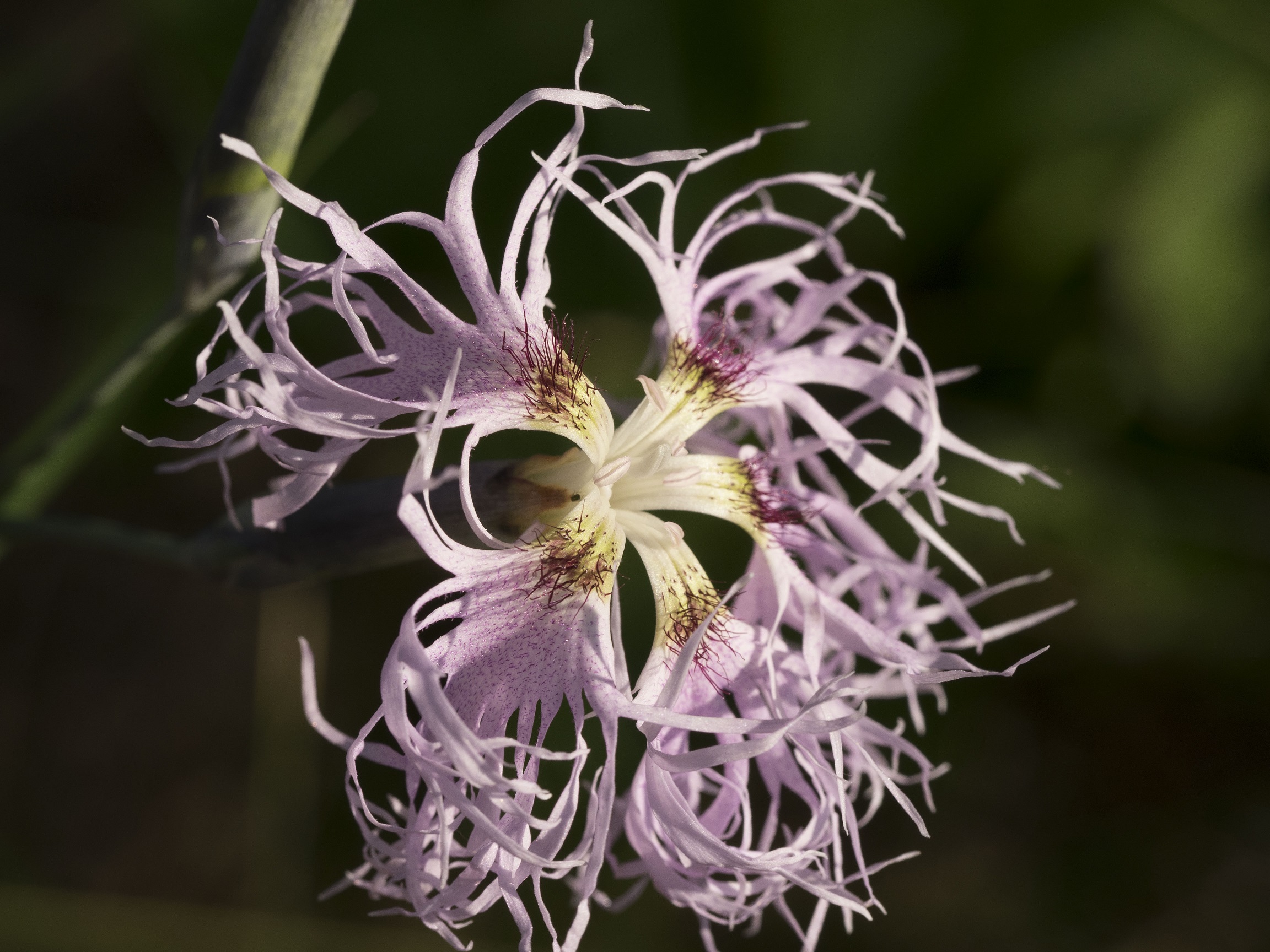 Carnation
Carnation
Plot 8
Meadow sage and real sage have many bright purple labial flowers and are very popular with bees. It grows constantly in the flowering areas around the Gumpenstein buildings and on the gravel lawn. The sticky sage has yellow flowers and catches small insects with sticky droplets of glue.
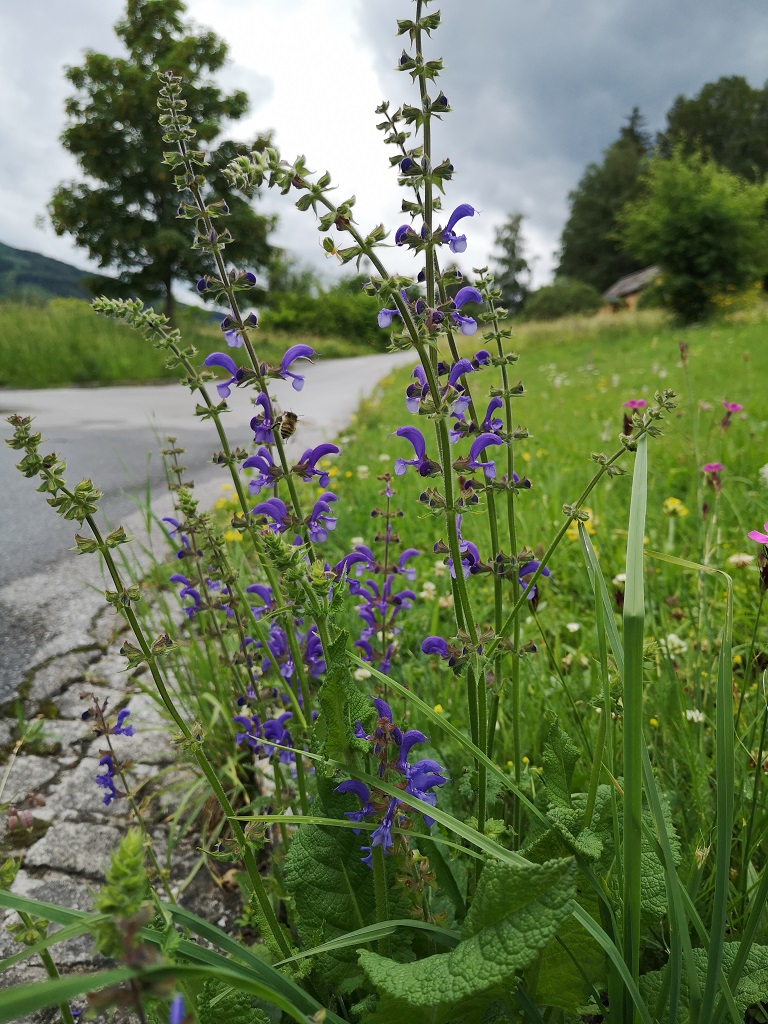 Meadow sage
Meadow sage
plot 9
Scabioses have a long flowering period and prefer calcareous, permeable soils such as embankments. They are very attractive to bumblebees, butterflies and bees and enhance any extensive meadow or flower strip mixture. The pigeon scabiosis has a spherical flower head, the yellow scabiosis and the glossy scabiosis have a flat flower head.
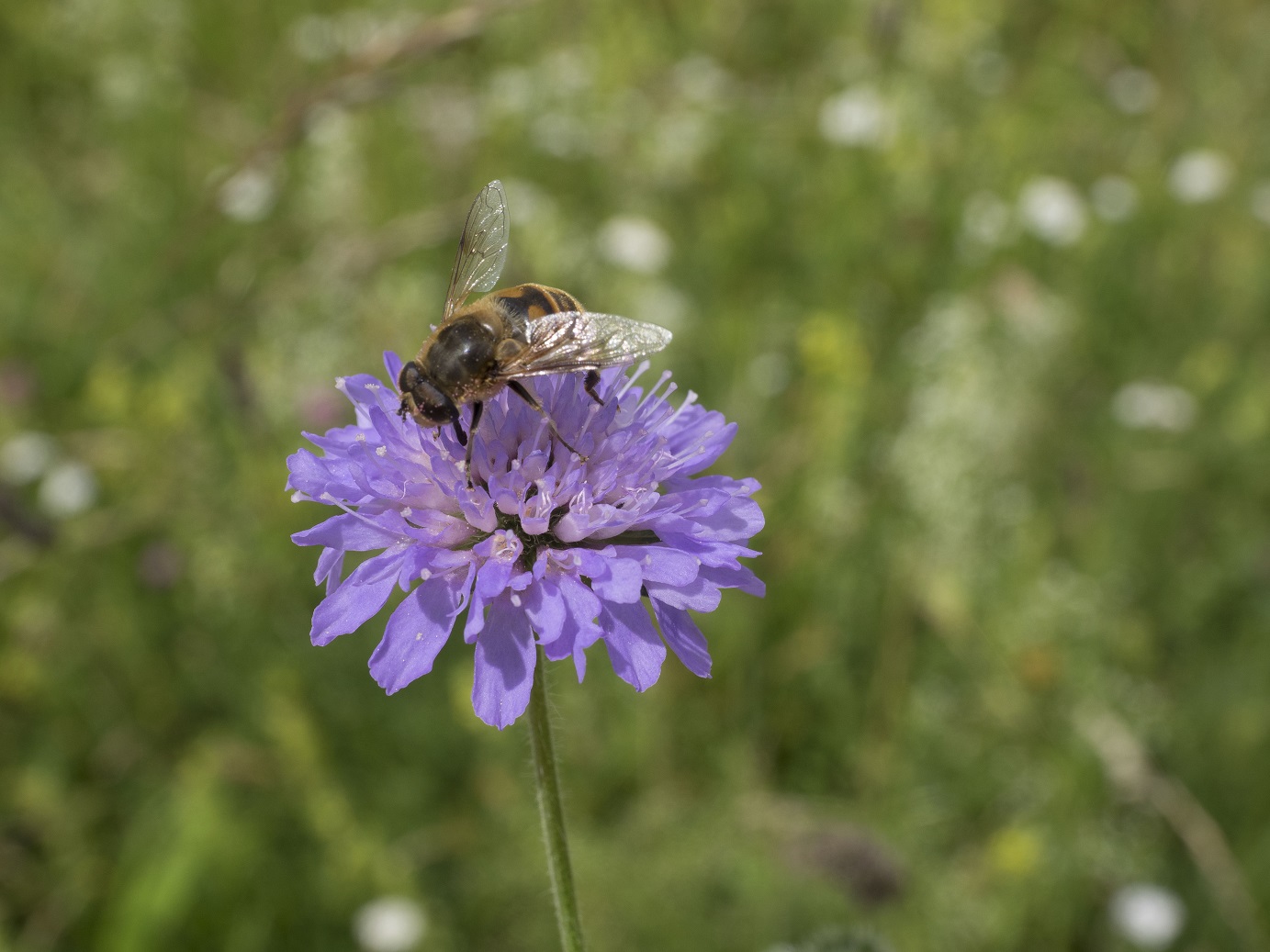 Scabious
Scabious
The HBLFA Raumberg-Gumpenstein seed collections make a valuable contribution to preserving biodiversity. The storage serves as a gene reservoir and for seed propagation for species-rich seed mixtures.






